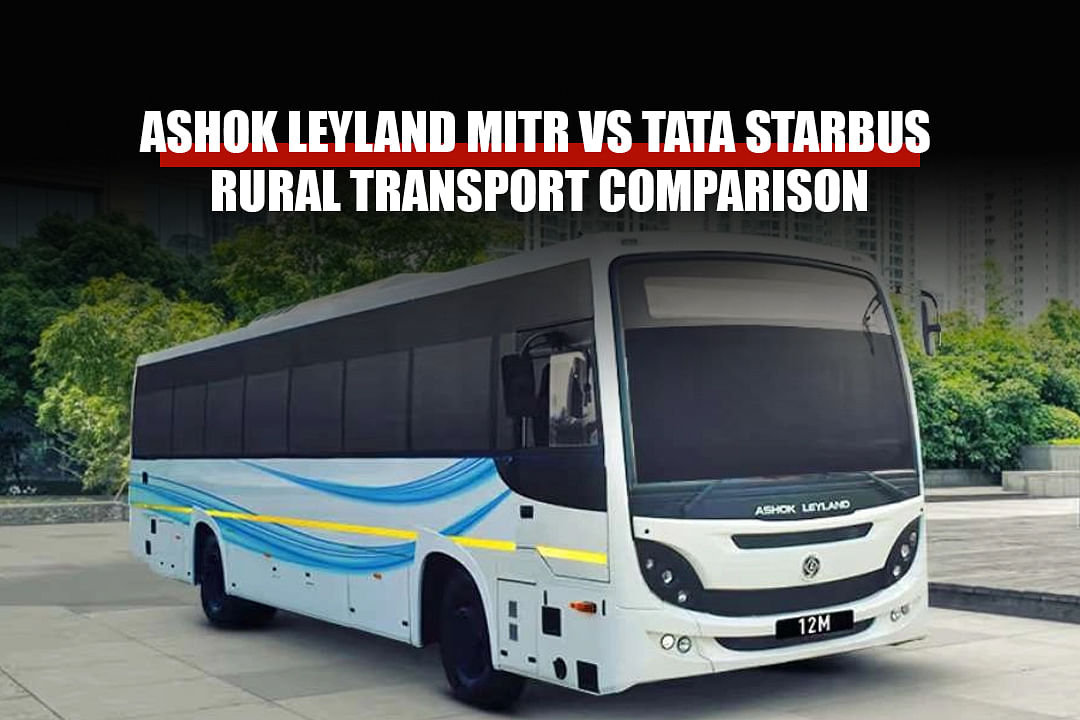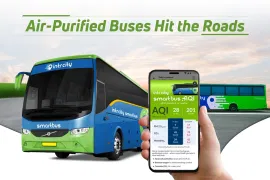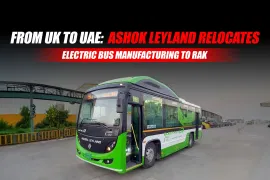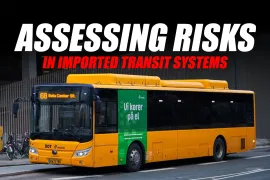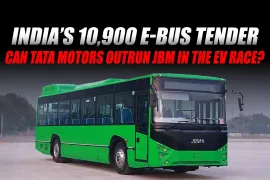In rural areas, buses connect people, these buses carry workers, students, and goods. Transporters need buses that are tough, fuel-efficient, and low-maintenance, and two names lead this segment: Ashok Leyland MiTR and Tata Starbus, each bus having clear strengths. This article compares them closely, helping rural fleet owners choose the right commercial vehicle.
Design & Seating Capacity
Ashok Leyland MiTR: Light and Compact
Ashok Leyland MiTR has a lightweight body, its structure is aluminum-based, which improves mileage and reduces wear, with 26 seats, it fits village lanes. The bus turns easily and parks in tight spots, MiTR works well for school routes, short-distance trips, and hilly terrain.
Tata Starbus: Sturdy and Spacious
Starbus uses a larger chassis. It offers 16–50 seat options. The build suits rough roads. Ground clearance is high, which helps on muddy or broken paths. Starbus suits schools, institutions, and high-load rural routes.
Engine Performance
MiTR: Tuned for Efficiency
MiTR runs on a diesel engine, gives 140 hp and 320 Nm torque. The engine pulls smoothly in low gears. The gear shifts feel balanced. Mileage stays high even with frequent stops. In fuel-sensitive operations, this matters a lot.
Starbus: Strong on Power
Tata Starbus offers a 3.3 LTR diesel engine. It gives up to 160 hp and 475 Nm torque. This power helps on steep roads and loaded drives. For long rural routes with elevation, Starbus performs without lag.
Comfort & Interior
MiTR: Simple but Quiet
The cabin is basic but useful,seats have moderate padding, and ventilation flows evenly. The bus stays quiet on the move, noise, vibration, and harshness stay low which helps on bumpy roads. It might not be luxury, but it’s comfortable.
Starbus: Roomier and Smoother
Starbus has a higher roof, the gangway is wider, and seats feel better shaped. Driver space is ergonomic. In AC variants, comfort increases, Starbus suits long routes and daily institutional transport.
Safety Features
MiTR: Meets All Basics
MiTR uses hydraulic brakes, It includes seat belts and an anti-roll bar. The frame holds steady on turns which complies with transport safety norms.
Starbus: Enhanced Safety Tools
Starbus adds ABS in some variants, school versions come with FDSS (Fire Detection and Suppression System). Some models have reverse sensors and have higher structural strength, these features raise safety on busy or difficult routes.
Maintenance & Service
MiTR: Easy and Affordable
MiTR needs fewer tools to repair which can be handled by local mechanics. Spare parts cost less that’s why service downtime stays low. For small operators, this is a major plus.
Starbus: Wider Support, Higher Tech
Starbus has a larger service network, but its systems are complex. Repairs may need trained staff and parts cost more. For larger fleets, uptime still stays high due to preventive care.
Price Comparison
| Specification | Ashok Leyland MiTR | Tata Starbus |
| Price Range | ₹17–20 lakh | ₹18–23 lakh |
| Seating Capacity | 26 | 16–50 |
| Mileage Efficiency | Higher | Moderate to Good |
| Maintenance Cost | Low | Medium |
| Best Fit | Short, frequent rural trips | Long, heavy-load rural use |
Conclusion
MiTR and Starbus serve different needs.
Choose MiTR if you want:
- Easy handling on narrow roads
- Better mileage
- Low-cost maintenance
Choose Starbus if you need:
- Higher capacity
- More safety features
- Better performance on heavy routes
Both buses serve well in rural areas. What matters most is your route, load, and budget.
View all models at 91Trucks.
FAQs
1. Which bus gives better mileage in rural areas?
Ashok Leyland MiTR gives better mileage, especially on short, stop-heavy routes.
2. What is the price of Tata Starbus?
The Tata Starbus price ranges from ₹18 lakh to ₹23 lakh, depending on the model.
3. Is MiTR suitable for hilly areas?
Yes, MiTR handles hills well due to good torque and balanced gear ratio.
4. Which bus is better for school contracts?
Tata Starbus is better for schools because of extra safety systems like FDSS.
5. Are spare parts easily available for both buses?
Yes, both Ashok Leyland and Tata have strong rural service networks.
For more articles and news, stay updated with 91trucks. Subscribe to our YouTube channel and follow us on Facebook, Instagram, and LinkedIn for the latest videos and updates from the automotive world!
Read More:
Web Stories
Latest Buses News
Categories
91trucks is a rapidly growing digital platform that offers the latest updates and comprehensive information about the commercial vehicle industry.
